Road Warriors, Part 1: The Top Remote Production Highlights Of 2016
Story Highlights
Throughout North and South America, 2016 was quite the year for sports production. Annual events like the College Football Playoff National Championship Game, Super Bowl, and MLB All-Star Game showed off state-of-the-art technology and enhanced production workflows, and annual tournaments like U.S. Open golf, US Open tennis, and March Madness kept sports viewers tuning in day after day. But the biggest production story of 2016 was undoubtedly the Rio Olympic Games: a record-breaking feat of broadcast production for national- and international-rights holders alike, which captivated audiences around the world. All in all, the live-sports-production community shone in 2016; a trend certain to continue in 2017. Here’s a look at some of the highlights from the first half of 2016.
CLICK HERE for Part 2 of Road Warriors.
College Football Playoff National Championship Game
University of Phoenix Stadium, Glendale, AZ
January 11
ESPN’s coverage of the 2016 College Football Playoff National Championship between the Clemson Tigers and Alabama Crimson Tide represented arguably the most ambitious plan ever for a single football game. First, there was a massive effort to offer top-notch game coverage; additionally, ESPN created 14 channels of additional content available via ESPN3 and WatchESPN.
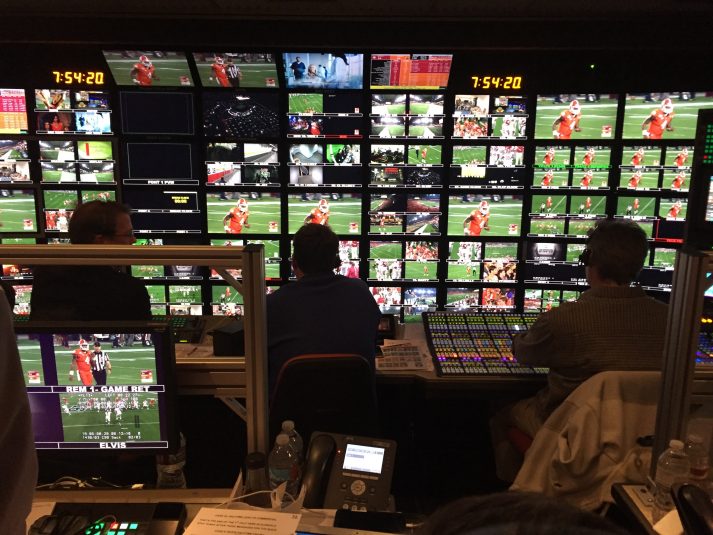 “I’m proud of my team because the first challenge is dealing with that sheer volume of games and to be able to manage those events, get them on-air successfully, and be ready for two semifinal games and the national championship,” said John LaChance, director of remote operations, ESPN. “That’s a collective effort that took a lot of planning, and I think the team executed it very well.”
“I’m proud of my team because the first challenge is dealing with that sheer volume of games and to be able to manage those events, get them on-air successfully, and be ready for two semifinal games and the national championship,” said John LaChance, director of remote operations, ESPN. “That’s a collective effort that took a lot of planning, and I think the team executed it very well.”
Highlights included the debut of the pylon cam: at each end-zone corner, a pylon housed a camera in each of its four sides and provided comprehensive coverage of the goal line and sidelines near the end zone. The game also featured four I-MOVIX 4K cameras, with two on the far side and two on the near side, and six Sony HDC-4300 cameras with three operating in 6X mode and three operating in 4X mode. There were also two Sony HDC-2500 units operating in 2X mode.
At the center of the game coverage were Game Creek Video’s Glory A and B 53-ft. expando units. The equipment complement across game coverage, GameDay, Megacast, and ESPN Deportes included 65 cameras (plus the 32 on the pylon cams) outfitted with Canon lenses (five 100X versions, nine 85X, five 86X, and one 75X), 96 channels of EVS XT3 (in various six-, eight-, and 12-channel configurations); and 64 channels of Evertz DreamCatcher. Vizrt and Sportvision gear handled graphics needs, and Calrec audio consoles and Grass Valley production switchers were at the core of mixing audio and video signals.
Super Bowl 50
Levi’s Stadium, Santa Clara, CA
February 7
NEP’s SSCBS, a cutting-edge mobile unit that serves as the backbone of the Thursday Night Football production, brought Super Bowl production into the IP era, thanks to an Evertz IP router and plenty of hard work to ensure that operating in IP mode is as reliable as working in traditional baseband mode.
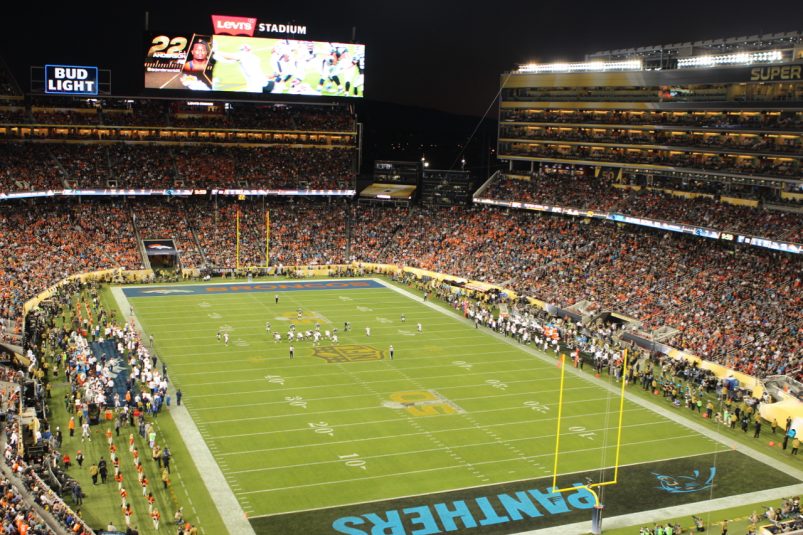 “The good news is that we basically produced a Super Bowl-in-a-Box every Thursday night during the regular season out of SSCBS. So this is a really good situation for us,” said Ken Aagaard, EVP, innovation and new technology, CBS Sports. “We planned, when we knew that we were going to have a new truck, to make sure that it wasn’t going to be new and out of the box for the Super Bowl.”
“The good news is that we basically produced a Super Bowl-in-a-Box every Thursday night during the regular season out of SSCBS. So this is a really good situation for us,” said Ken Aagaard, EVP, innovation and new technology, CBS Sports. “We planned, when we knew that we were going to have a new truck, to make sure that it wasn’t going to be new and out of the box for the Super Bowl.”
The NEP presence at Super Bowl 50 extended beyond SSCBS. Fans around the world saw a world feed produced out of EN1, the halftime show was produced in NEP’s Denali California unit, the NFL Honors program was produced out of Denali Summit, and SS16 was at Super Bowl City in San Francisco. NEP also supported ESPN’s effort at Marina Green in San Francisco. NEP had 75 employees on hand to ensure that all operations went as smoothly as possible.
During the Big Game, CBS Sports made use of a new Sony 4K camera that can record at 8X speed (coupled with a new Canon UHD lens) and the Replay Technologies’ freeD technology, the backbone of CBS Sports’ EyeVision 360 system.
NBA All-Star Game
Air Canada Centre, Toronto
February 14
NBA All-Star Weekend, one of the marquee events on the NBA calendar, traveled to Toronto, and the full slate of events once again had Turner Sports and NBA TV production teams, numbering more than 170 people, quite busy. It also marked a return to normalcy after last year’s event in New York City, when the NBA All-Star Game was played at Madison Square Garden and All-Star Saturday Night activities were held at the Barclays Center in Brooklyn. All the top activities this year took place at the Air Canada Center (ACC).
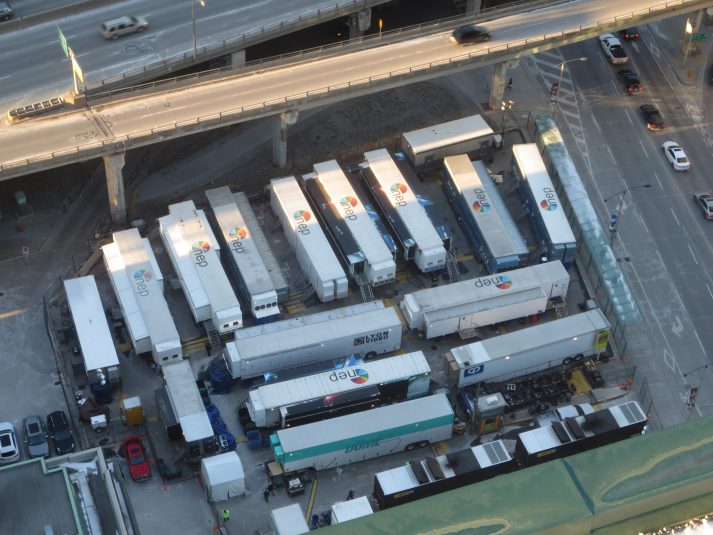 “Managing one building’s schedule is far less difficult than trying to manage two buildings, two schedules, and the logistics of getting back and forth,” noted Chris Brown, director, technical operations, Turner Sports.
“Managing one building’s schedule is far less difficult than trying to manage two buildings, two schedules, and the logistics of getting back and forth,” noted Chris Brown, director, technical operations, Turner Sports.
From a production standpoint, 36 cameras were deployed at the ACC for All-Star Weekend on Saturday night and Sunday. New this year were four Sony HDC-4300 cameras operating in 6X mode for slow-motion replays, and Turner also made use of the freeD 360 replay system.
In terms of the production trailers onsite, NEP’s SS24 handled game duties on Friday and Sunday at the ACC, and NCPX was in action for All-Star Saturday Night. A production team working in NCPVIII oversaw halftime entertainment and player introductions on Sunday. NEP’s ND1 three-trailer unit was also onsite.
Daytona 500
Daytona International Speedway, Daytona, FL
February 21
This year’s Daytona 500 marked the completion of the $400 million Daytona Rising redevelopment project. Fox Sports pushed the envelope at the race. Among the innovations, an augmented-reality view of a virtual racecar was generated from the “Hollywood Hotel,” the suite of Game Creek FX production units that has been involved with this show for nine years.
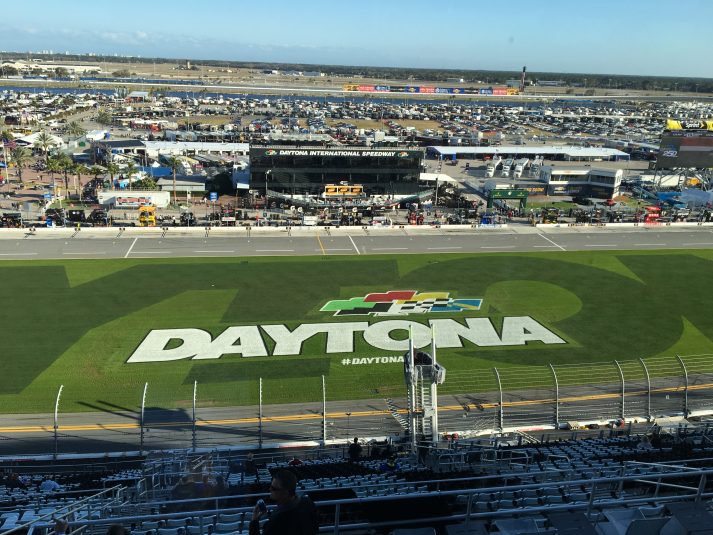 Inertia Unlimited’s Gopher Cam (aka the Ground Cam) returned for its eighth season of Fox’s NASCAR coverage with a new lens, a lower profile, and new track positions. Two Inertia Unlimited Phantom Flex4K cameras, capable of up to 1,000 fps and allowing tight slow-motion shots, were located on the front stretch and the beginning of the back stretch.
Inertia Unlimited’s Gopher Cam (aka the Ground Cam) returned for its eighth season of Fox’s NASCAR coverage with a new lens, a lower profile, and new track positions. Two Inertia Unlimited Phantom Flex4K cameras, capable of up to 1,000 fps and allowing tight slow-motion shots, were located on the front stretch and the beginning of the back stretch.
“These cameras will be able to replay and zoom into the action now as a high–frame-rate camera,” said Mike Davies, SVP, field and technical operations, Fox Sports. “With one camera, we can now break down a wreck in multiple ways using a single camera shot: zoom into the car that caused the wreck, the car that got caught up in it, and the one that got away.”
In all, Fox Sports deployed 20 manned cameras; four in-track ground cameras; two Inertia Unlimited X-Mo units (one at the end of pit road, the other at the start/finish line); a 33-ft. tower cam; two grass cams; 10 robotic race cameras; three robotic Hollywood Hotel cameras; eight in-car packages, each featuring three camera angles; four wireless roving pit/garage units; and 25 digital-video-replay devices with more than 110 channels of recording/playout. — Dan Daley
NCAA Men’s Basketball Final Four
NRG Stadium, Houston
April 2-4
Turner Sports and CBS Sports’ joint production of the NCAA Division I Men’s Basketball Championship got even bigger this year. The continued growth of the main production, coupled with the TeamStream productions offering fans more-customized coverage of their favorite team, had the production and operations teams onsite putting on not just three shows over Final Four weekend but nine.
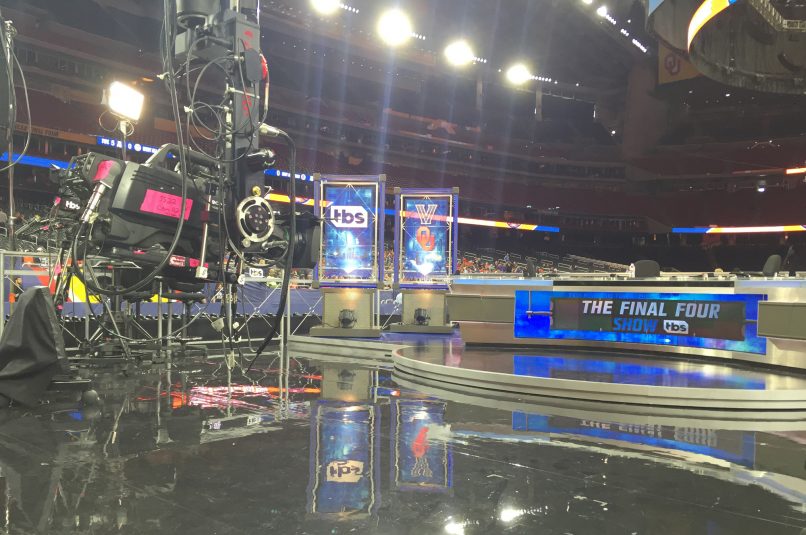 And, for the first time, the entire Final Four, including the Championship Game, moved to cable television, giving Turner Sports its first crowning of a champion ever.
And, for the first time, the entire Final Four, including the Championship Game, moved to cable television, giving Turner Sports its first crowning of a champion ever.
“As someone who has been around sports for some time, these are the moments you live for,” said Tom Sahara, VP, operations and technology, Turner Sports. “To say that you’re among the first to do it, this will certainly go down as one of the high points of my career.”
Turner Sports and CBS Sports lined up 13 mobile production units — six from F&F Productions, six from NEP Broadcasting, one from Bexel — outside NRG Stadium in Houston to support a robust production that included three simultaneous linear productions.
A large complement of 51 total cameras was deployed: 26 working the primary game, eight for TeamStream coverage, and 17 for two studio sets positioned behind each student section. On the specialty end were the Skycam Wildcat aerial system that worked Super Bowl 50 for CBS Sports, an RF Steadicam, the Rail Cam, a helicopter outside the building, and a collection of Sony HDC-4300 high-speed cameras.
Copa America Centenario
Seattle, Chicago, Foxborough, East Rutherford, Santa Clara, Philadelphia, Pasadena, Glendale, Houston, & Orlando
June 3-26
Copa America international men’s association football tournament took place in 10 cities across the U.S., with 16 teams playing 32 matches throughout June. CONCACAF inked deals with a number of companies to help ensure that match coverage was all it needed to be, including Broadcast Services Group, HBS, Lyon Video, The Switch, Vista Worldlink, and Zero Fractal. In addition, Atlanta-based Encompass played a key role as the home to the CONCACAF Broadcast Operations Center (BOC).
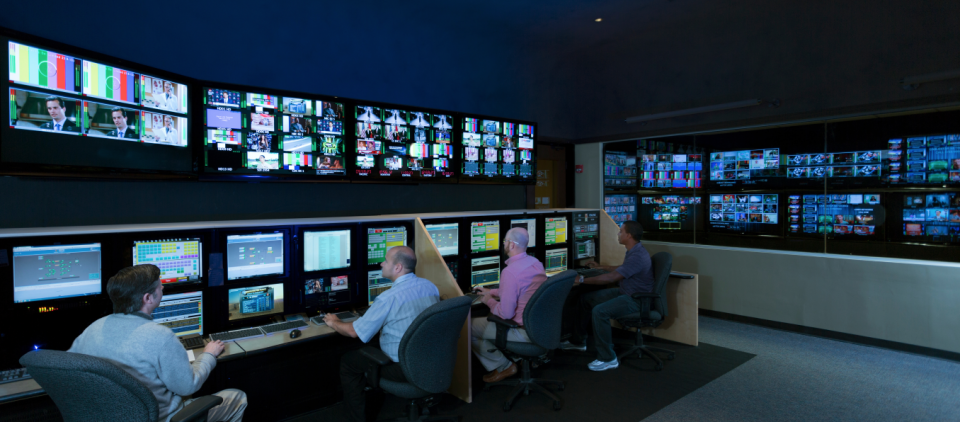 “This is historic and the biggest soccer event that has happened in the U.S. since the World Cup in 1994, as it has big stars, great teams, and great attendance,” said Oscar Sanchez, director of broadcast operations, CONCACAF. “We’re trying to have the production at a level that matches that.”
“This is historic and the biggest soccer event that has happened in the U.S. since the World Cup in 1994, as it has big stars, great teams, and great attendance,” said Oscar Sanchez, director of broadcast operations, CONCACAF. “We’re trying to have the production at a level that matches that.”
Basic coverage for all 32 matches was provided by 27 cameras, with aerial coverage via helicopters added for the opening match on June 3, the two semifinals, and the final match on June 26 at MetLife Stadium in New Jersey. The 27 cameras comprised 11 hard cameras plus a Skycam, two ultra-slow-motion cameras, four super-slo-mo cameras, a tactical remote camera, two RF Steadicams, two additional handheld cameras, two box cameras, and two net cameras. Lyon Video provided remote-production facilities, with eight HD trucks deployed for the 32 matches. A distribution plan for each match involved a fiber path from each venue (along with two satellite signals) to the BOC.
A highlight of the coverage was a 4K production of the final match. The 4K coverage was a side-by-side production featuring 10 4K cameras, with two camera positions, cameras 3 and 4, directed by the HD match director.
Ken Kerschbaumer, Jason Dachman, Brandon Costa, and Karen Hogan contributed to this report.
